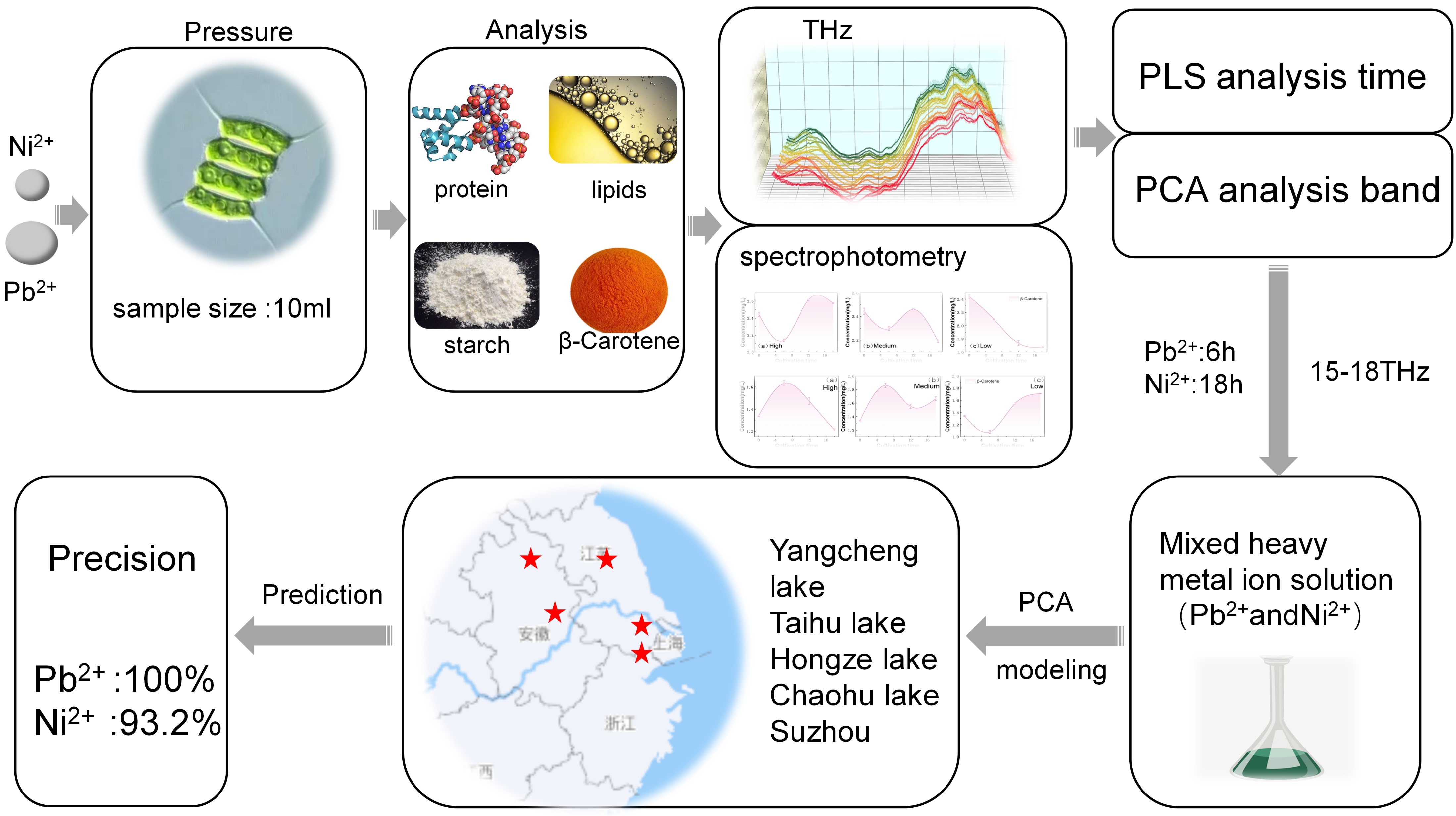Under the leadership of Academician Zhuang Songlin, the relevant results of Shao Yongni, associate professor of the School of Optoelectronics, University of Shanghai for Science and Technology, were published in the Journal with the title "Measuring heavy metal ions in water using nature microalgae as medium based on Terahertz technology" of Hazardous Materials (IF:14.2), in which Professor Peng Yi and Professor Zhu Yiming are the corresponding authors of the article. Journal of Hazardous Materials is a top international journal on public health and the environment published by Amsterdam: Elsevier in 1975, and has a high academic influence in the field of hazardous substance detection and risk assessment.
Excessive heavy metal elements are one of the main threats to human health in nature, and the hazard of water weight metal is persistent and not easy to degrade, which makes the detection of water weight metal pollution a major problem to be solved urgently. Traditional methods for detecting water weight metals require complex pretreatment, which is time-consuming, labor-intensive, and pollutes the environment, as well as the time lag of detection.
This paper effectively uses the advantages of terahertz spectroscopy in studying intramolecular vibration and rotational energy levels, proposes to enrich and adsorb heavy metals by using microalgae as a carrier, and uses terahertz spectroscopy to reveal the change law of material components in the body after microalgae adsorption of heavy metals, including the content change trend of oil and pigment, so as to accurately determine the type and degree of metal pollution in water weight. The terahertz spectra of microalgae in water under different concentrations of Pb2+ and Ni2+ were collected, and the changes of protein, lipid, starch and β-carotene content in the body after the adsorption of heavy metals by microalgae were analyzed. Through principal component analysis, β-carotene (15-18 THz) was obtained as the component of the substance most affected by heavy metal ions. The time point for judging the optimal effect of Pb2+ is 6 hours, and the time point for judging the optimal effect of Ni2+ is 18 hours. Furthermore, through the above results, a correlation model between heavy metals (Pb2+ and Ni2+) mixed water and microalgae material components was established, and the model was verified with real water samples in East China, in which the accuracy of Pb2+ and 93.2% was 93.2%.
Compared with the traditional heavy metal detection method, the method proposed in this paper combined with terahertz technology with microalgae as the carrier does not require complex pretreatment, the sample size is only 10 ml, and the detection accuracy is improved to 0.001 mg/L, which provides a new technical support for the detection of the type and concentration of water weight metal. The advantages of the research are that it is in situ, rapid, and no pollution to the environment, which is conducive to real-time monitoring of water pollution, and at the same time can play the effect of purifying water through microalgae, which provides new detection ideas and methods for improving the detection of water weight metals.

Article information:
Yongni Shao, Yutian Wang, Di Zhu, Xin Xiong, Zhengan Tian, Alexey V. Balakin, Alexander P. Shkurinov, Duo Xu, Yimei Wu, Yan Peng*, Yiming Zhu*. Measuring heavy metal ions in water using nature existed Microalgae as medium based on Terahertz technology. Journal of Hazardous materials. 2022, Vol.435